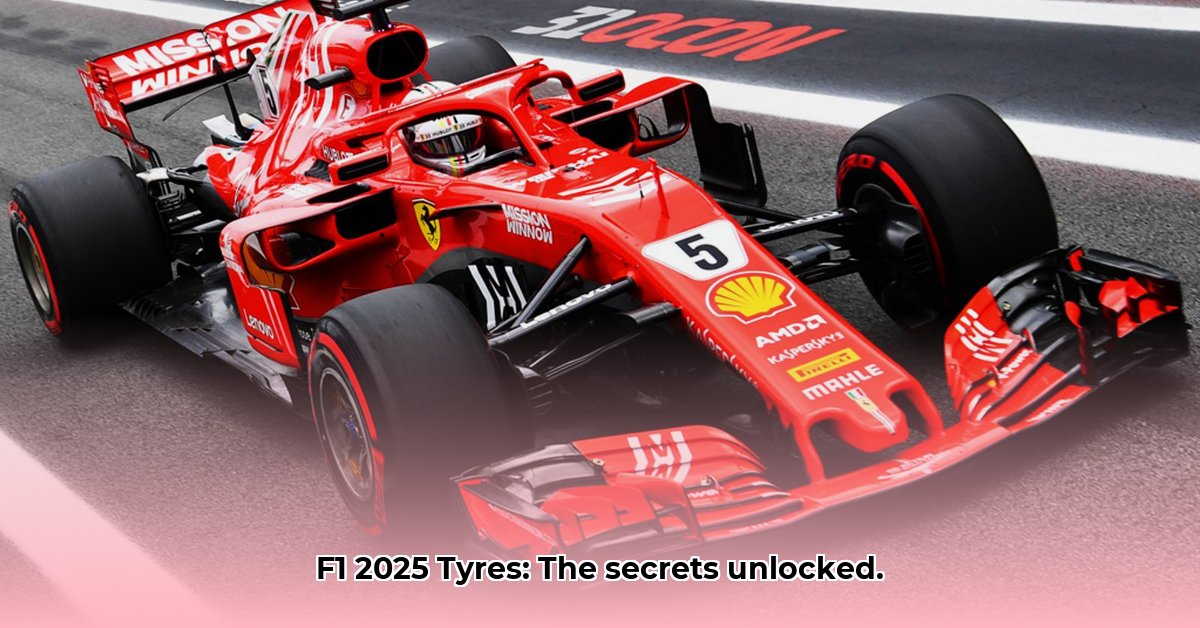
F1 Tyres: A Deep Dive into the Science and Strategy of Speed
Eish, Formula 1 racing is more than just fast cars; it's a high-octane game of strategy, and at the heart of it all lie those super-special Pirelli tyres. These aren't your average rubber; they're meticulously engineered pieces of technology that can make or break a driver's race. Understanding them is key to truly appreciating the sport's complexity. This guide will unpack everything you need to know, from the different tyre compounds and their characteristics to how teams use them to win races, and predict what’s coming in the future.
Cracking the Code: Pirelli's Tyre Compounds
Pirelli supplies six different types of dry-weather tyres, colour-coded from hardest (C1) to softest (C6). Think of it like choosing your takkies: a C1 is like a sturdy pair of hiking boots – durable but not fast; a C6 is more like those lightweight racers – blazing speed, but they'll wear out quickly. Each compound offers a different balance between grip and durability.
| Compound | Colour | Hardness | Degradation Rate | Optimal Track Temperature (°C) | Grip Level | Durability |
|---|---|---|---|---|---|---|
| C1 | White | Hardest | Slow | >40°C | Low | High |
| C2 | White | Hard | Medium | 35-45°C | Medium-Low | High |
| C3 | Yellow | Medium | Medium | 25-35°C | Medium | Medium |
| C4 | Yellow | Medium | Medium | 20-30°C | Medium | Medium |
| C5 | Red | Soft | Fast | <25°C | High | Low |
| C6 | Red | Softest | Fastest | <20°C | Highest | Lowest |
But remember, ou, the track temperature and surface greatly influence performance. A C3 might feel like a C2 on a cooler day. It's a complex dance!
Wet Weather Warriors: Intermediate and Full Wet Tyres
When the heavens open, the C1-C6 are swapped out for specialised rubber. Intermediates are for damp conditions – finding a sweet spot between grip and aquaplaning. Full wets are for proper downpours, designed to channel water for maximum grip despite the deluge. Choosing the right wet-weather tyre is high-stakes decision-making!
Tyre Strategy: The Pit Stop Puzzle
Race strategy isn’t just about driving fast. It’s a carefully planned pit-stop puzzle factoring in loads of variables:
- Weather: A sudden shower can drastically change tyre performance.
- Track Temperature: Affects wear and tear massively.
- Tyre Degradation: Some compounds wear quicker than others. Understanding this is crucial.
- Track Abrasiveness: The surface of the track also affects tyre wear.
Teams use clever techniques like “scrubbing” (warming up tyres gently) to optimise performance. It’s a delicate balance between speed and tyre longevity. And remember, every team will be trying to outsmart each other!
Tyre Management: A Delicate Balancing Act
"Tyre management in F1 is less of a race and more of a delicate dance," says Dr. Sarah Evans, Head of Tyre Engineering at Williams Racing. "It's about understanding the balance between pace and longevity." Every team uses data from sensors embedded in the tyres to understand how they are performing and to plan their pit strategy so that they are not left out to dry.
Technological Advancements and the Future of F1 Tyres
Remember the big 2022 shift to 18-inch wheels? That changed everything, impacting the balance between grip and degradation and demanding entirely new approaches to strategy. With even more changes expected in 2026, it's clear that the constant evolution impacts all race strategies.
Pirelli's Green Push: Sustainability in F1
Pirelli is making strides in sustainability, using FSC-certified sustainable rubber and other eco-friendly materials to lessen F1 racing’s carbon footprint. This is a significant win for sustainability in motorsport.
How to Optimize F1 Tyre Strategies Using C6 Compound Data
The C6 compound, being the softest, has both challenges and opportunities. It's all about the balance between speed and long-life.
Steps to Optimize C6 Tyre Strategies:
- Track Analysis: Understand the track's characteristics (abrasiveness, corners etc) and the weather forecast. This prediction will be extremely helpful in making the right decision.
- One-Stop vs. Two-Stop: Assess whether a one-stop strategy (maximising C6 longevity) or two-stop (using different compounds) is more effective based on simulations.
- Pit Stop Timing: Use real-time data to optimize exact pit stop timing, balancing speed and C6 lifespan.
- Driving Style: Coach drivers to balance aggressive pace with tyre preservation to ensure that this delicate balance is adhered to.
- Data-Driven Decisions: Constant monitoring of tyre data (temperature, pressure, wear) is key for informed decision-making.
Remember, the C6 strategy is just one part of the overall race plan. It's all about holistically considering all compounds and how various strategies will impact the race's flow. It's a chess game, ou.
[https://f1briefing.com/f1-tire-management-essential-guide-for-race-strategy/]: F1 Briefing. F1 Tyre Management: Essential Guide for Race Strategy. Accessed 21 June 2025.